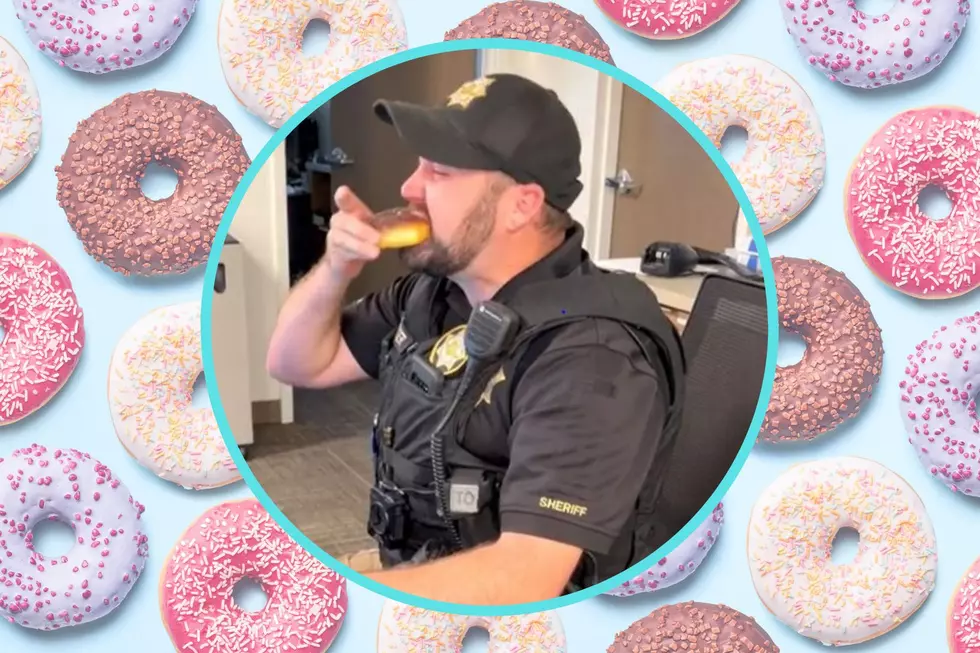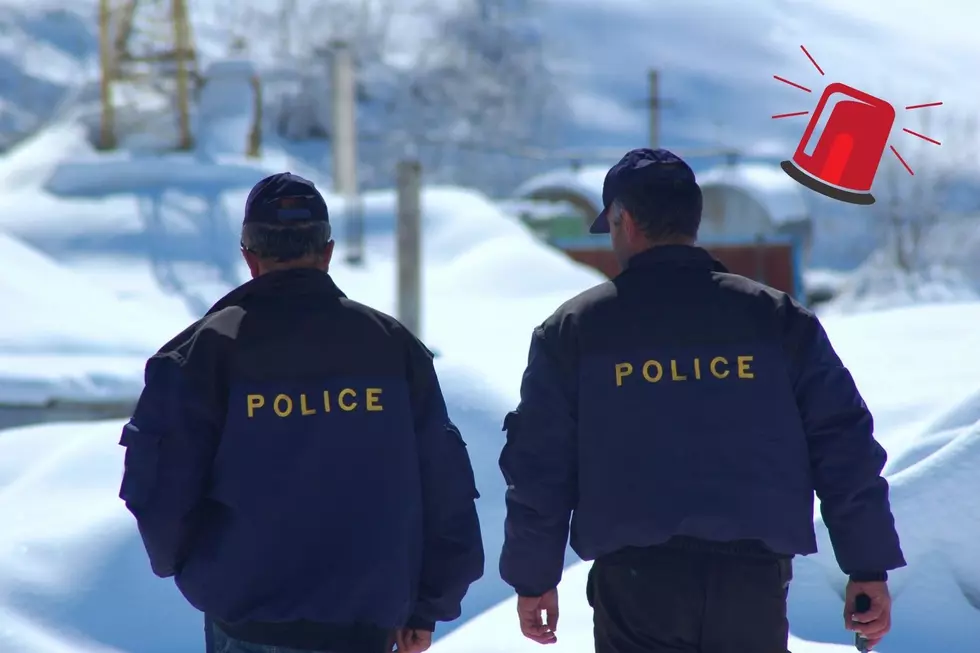
Deadly Force: Casper Reporters Learn How Officers Make the Call
We hear all too often about law enforcement officers who shoot and kill people, some of them unarmed. Many of us are quick to condemn the officer involved, thinking we could have resolved the situation without violence and wondering how the trigger-happy cop who fired the fatal shot could have been so irresponsible.
After all, we've seen this kind of thing handled in the movies a million times.
For all the Monday-morning quarterbacking, these situations rarely develop as simply as they are portrayed -- something I was fortunate to learn firsthand with a few of the men behind the badge in Casper.
The Natrona County Sheriff's Office allowed us second-guessers in the press to take part in their "Use of Force Simulator."
The simulator uses computer generated scenarios, and we novices get to see, feel and react to the kinds of situations cops face every day.
So armed with my pistol, which fires harmless laser beams, I was dispatched to a computer-generated house to check out a call from someone who said their neighbor had been acting strangely lately and was carrying a gun around his property that day.
As soon as I arrived, I was face-to-face with a man holding a revolver to his head, standing at the top of his driveway.
I drew my sidearm and shouted "Sir, drop the gun!" The words had hardly left my mouth before another police officer ran around from the side of the house, stood behind the suicidal man and shouted "Police! Drop the weapon!"
In the blink of an eye, the suicidal man turned and started shooting at the officer.
It seemed like half an hour had passed by the time I fired one shot into the man's back and watched him drop to the concrete.
The whole thing lasted about 10 seconds.
Then came the questions. Natrona County Sheriff Gus Holbrook sat in the back of the room while I was asked things like, 'Why did you shoot him in the back?' and 'Do you think you were justified in killing that man?'
I was positive I did the right thing -- he tried to shoot the other officer. The only part I wondered about was whether I had killed the guy quickly enough.
But I felt more uneasy with each question I was asked. And I envisioned the headlines: 'Killer cop shoots mentally ill father of three in the back.'
After spending some time in the simulator, I'm convinced it's a piece of technology that keeps people alive -- and not just the folks in blue.
"Citizens, too," Holbrook told me. "You don't want an untrained deputy out there carrying a weapon, making deadly-force decisions."
The simulator is run by a trainer who sits at a computer in the back of the room with the ability to throw a new wrench into the works at any given moment. A woman with a toy pistol can quickly put the gun down when you tell her to, or it can turn out to be an actual firearm that she uses to put three bullets in your chest.
And you'd have no way of knowing until she started shooting.
So, when you're standing in the middle of that cold room, scrutinizing the situation projected in front of you for any potential threats, you know that things could turn deadly in an instant.
"These are deadly-force decisions that you have to make within a split second," Holbrook told us.
"I think it's important that you guys see what we go through with our training, and that you see how serious our training is," he added. "That's why you have to train -- you have to train for real-life situations, and this does prepare the deputies for those situations."
After my first run-through, I sat in the back and watched another reporter who was given the same CO2 pistol and sent out to a highway. All he was told was that a woman had called 911 to say her ex wanted to end his life.
The big screen at the front of the room turned on and showed us a bridge, where a man was standing on the wrong side of the guardrail, ready to jump.
The reporter put one hand on his gun but kept it in the holster. He started talking to the guy, saying he wanted to help.
He was convincing. Deputies would later laud his approach and his authenticity.
And his words proved worthwhile -- the guy changed his mind and carefully stepped back over the guardrail. It was a great example of how an officer can resolve a potentially deadly situation just by talking it out.
The reporter was dead a second later -- only in the simulator, of course.
The man who had just been talked off a ledge ended up pulling a pistol out of his waistband as he stepped back over the guardrail. The reporter drew his gun and fired, but it was too late. He didn't even get a round off before he was 'killed.'
The trainer in the back of the room played back the video and showed us that it only took half a second for the suicidal man to pull his gun and shoot the reporter.
That certainly threw things into sharp relief.
But the situation I found most compelling was one similar to a story I covered in late 2015: a guy sat in his truck in the parking lot of a ski area near Laramie. Sheriff's deputies had been looking for him, but when they finally found him, he was evidently suicidal and wouldn't get out of his truck.
After some time, he got out and charged the four deputies with a hunting knife. He was shot and killed.
The math never quite made sense to me -- four guys with guns against a guy with a knife? Gimme a break.
And when the story hit Facebook, there was no shortage of commenters arguing that the deputies should've used non-lethal means to subdue the guy, or shot the knife out of his hand as he ran at them.
Well, that's exactly what one reporter tried to do in the simulator on Thursday.
The scenario was a traffic stop -- the reporter was one of two officers who pulled a car over in the parking lot of a city park. The first officer asked the driver to step out of the car.
When he did, the driver pulled a seven- or eight-inch knife from somewhere and said, "I'm not going back to jail."
The trainer paused the simulation and told the reporter to use his pistol to shoot the knife out of the guy's hand as he stood outside his car, frozen.
I'd be lying if I said I remember exactly how many shots the reporter fired. The number could've been anywhere from 12 to 20.
Surprisingly, he did manage to hit the guy's hand twice.
As for the rest of his rounds, they ricocheted off the asphalt into a park where kids were playing with their parents. One bullet went into a car parked thirty yards away where a couple was having lunch before heading back to work.
The trainer took the opportunity to explain an often-overlooked part aspect of using deadly force -- law enforcement officers are accountable for every round they fire, including the ones that fly through a park or hit folks on their lunch break.
The simulation resumed, and the reporter repeatedly ordered the man to drop the knife, but the guy didn't listen. Then he charged the reporter.
I don't recall how far he got before he was shot three times. The reporter was fortunate to have reacted as quickly as he did.
And then Sheriff Holbrook reminded us that, had this been the real deal, the officer would have to live with that for the rest of his life.
"That's why we have counseling," Holbrook said.
Okay, so Casper's news reporters are mediocre marksmen (and women), things happen fast, and deputies have to deal with tough situations. Isn't that what they sign up for? Tell me something I don't know.
Well, that's just the thing. I don't think any of this comes as much of a surprise. I certainly never considered myself someone who needed to be convinced that police officers do their absolute best to keep people safe.
But when I stepped into the shoes of an officer -- even simulated shoes -- I've got to admit, it changed the way I look at things.
Suddenly, I didn't have half an hour to sort through every detail of the case. I had to decide to pull the trigger when a fellow officer was shot, and honestly, I reacted too slowly.
Had I really been at such a scene, my hesitation would have gotten that officer killed.
I am absolutely the last person that's going to argue that law enforcement officers should be immune to criticism because they have a difficult job. When someone is shot to death, by law enforcement or otherwise, we as a society should exhaust the legally-available means at our disposal to ensure justice is served.
I think Holbrook and the folks in his office would tell you the same thing. Accountable for every round they fire, and all that. They are public servants, they signed on for the job, and they should be held to the appropriate standard.
That said, it seems to me that the people of Casper's law enforcement are constantly working to better handle the most difficult situations. The training continues to evolve, they support and coach each other without letting ego get in the way, and they take their duties seriously. I saw that firsthand on Thursday.
Like any other group, generalizations about the people of law enforcement rarely prove accurate. When we rush to judgement about a police shooting and blame an entire department for it -- much less the entire profession -- we aren't doing the right thing. We aren't taking a hard look at the facts and asking ourselves, 'how would I have responded in the same situation?'
Trying to decide whether or how to use deadly force in the simulations taught me a lot, but the real impact came when we had a chance to put on a bulletproof vest and the heavy 'rifle plates' designed to protect officers against higher-caliber rounds.
"We bought those after Dallas," Holbrook explained.
More From 104.7 KISS-FM









